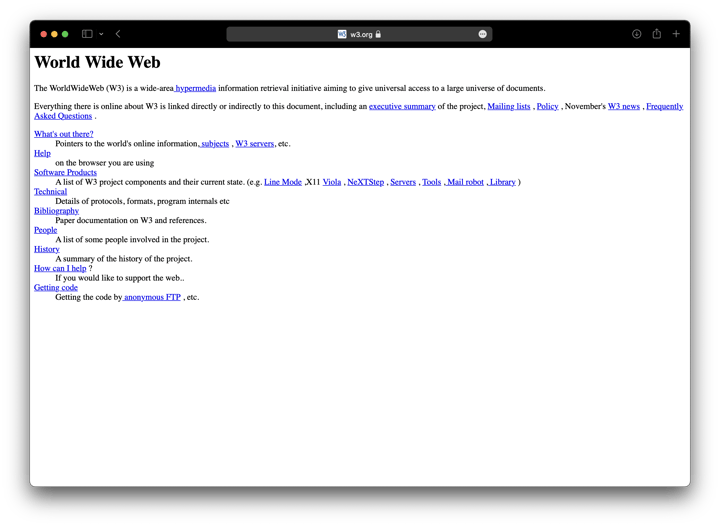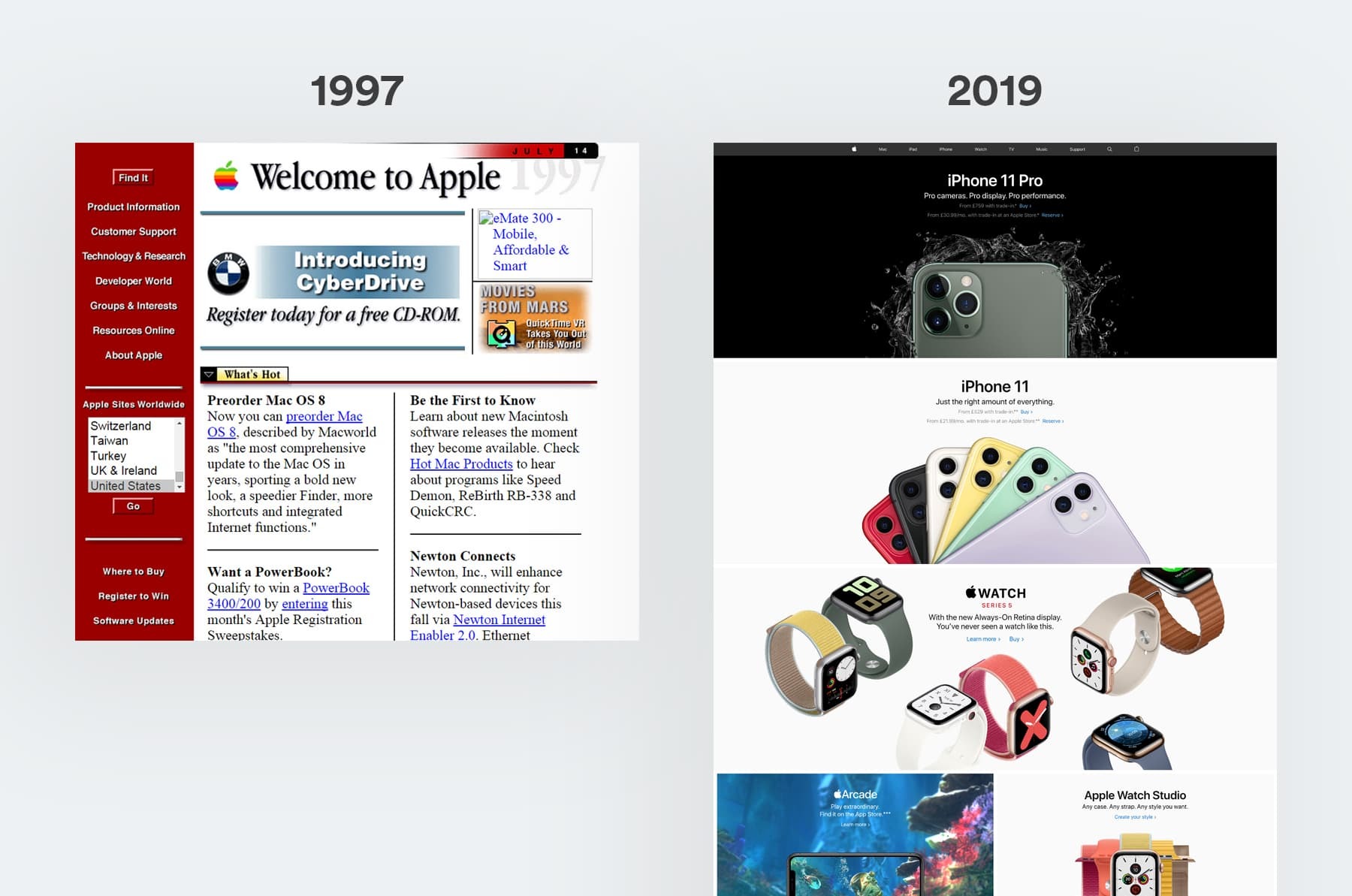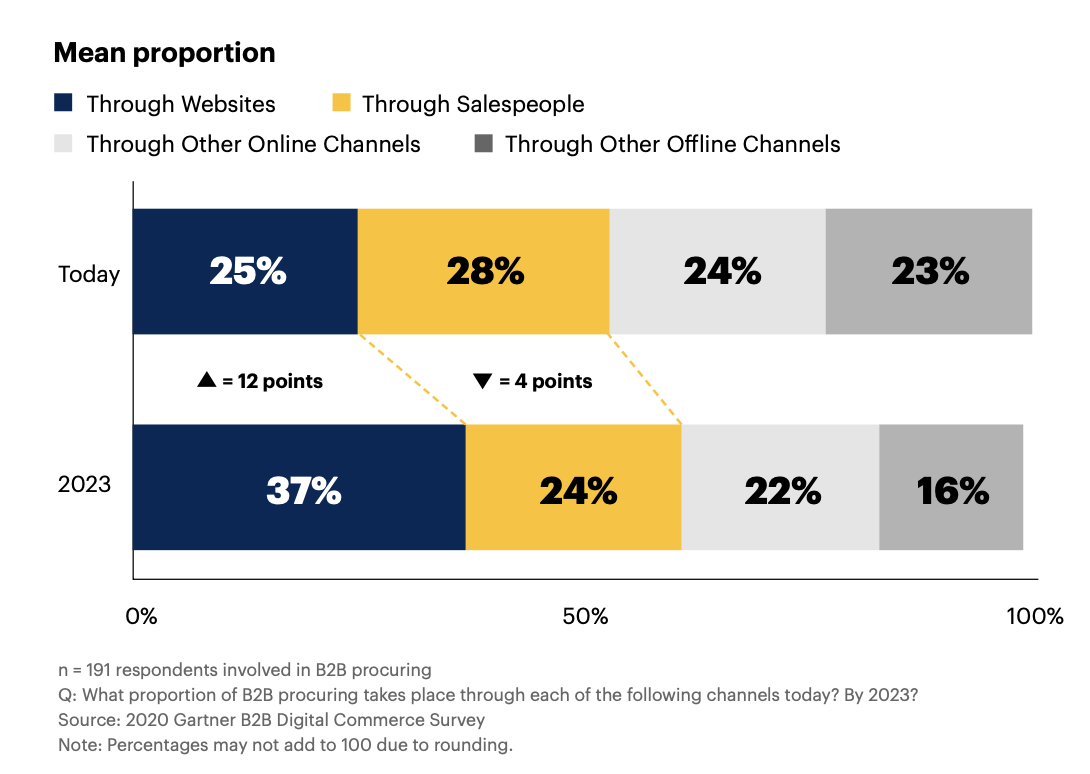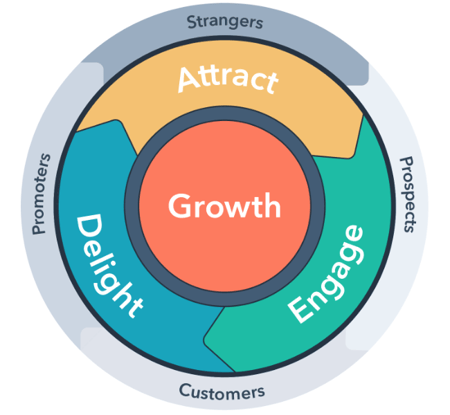The Ultimate Guide to Revenue Operations (RevOps)
The era of RevOps has arrived. RevOps makes revenue everyone's responsibility, aligning all teams around and creating predictable business growth.
- Blog
Modern websites built on a seamless CMS platform makes it easy to create remarkable experiences for your customers.
IKEA, the world’s largest furniture retailer, has fundamentally changed our experience of shopping for modern, Scandinavian furniture. Their unique shopping experience is intentionally crafted from storefront to cafe to deliver something truly magical.
The moment you step into an IKEA store, you’re drawn into an immersive experience from the first “hej” (hello, in Swedish), right through to the delectable Swedish meatballs and treats at the cafe.
IKEA is more than a furniture store. It’s an experience, transforming retail into retail therapy.

Here is IKEA's vision:
Our vision is to create a better everyday life for the many people – for customers, but also for our co-workers and the people who work at our suppliers.
This vision finds its way into product design and the whole shopping experience. Ultimately, the goal is to create delighted customers through experiential design.
I like to compare the IKEA experience to the experience you should have when you visit a company's website. A website should be easy to navigate, have useful instructions and leave you with a smile on your face.
Is that too much to ask? I reckon not!
The focus of a website should be creating wonderful experiences that delight the customer/user. Why is user delight important?
User delight refers to the positive emotional effect when interacting with your brand. It may not always be experienced outwardly but may influence user behaviours.
The truth is the better you feel, the more you pull your wallet out and shop.
Consider these stats:
Why is this important and how does it relate to your website?
Your website is a gateway to connecting, engaging and delighting your customers. So having a modern website becomes the primary means of delivering remarkable and unique experiences for your customers.
The goal is business growth powered by a sales and marketing engine crafted around the website. Your website is an investment to grow your business. It's your 24/7 best-performing sales rep every single year.
Before we talk about building websites, let's take a short trip back in time to the origins of the website.
In 1992, the first version of the world wide web was published. It was a barebones, single-column HTML based page. There were no images, only links. First published website by Tim Berners-Lee
First published website by Tim Berners-Lee
Early websites only showed text but soon websites evolved from text-only HTML to include graphics and media. Remember flash?
As websites slowly introduced more design, browsers too had to adapt to recognise the more complex CSS and styles. Instead of just a boring directory or listing, websites started to look visually appealing and people got more creative with their websites.
2007 was the year everything changed again for websites. It was when Steve Jobs launched the very first Apple iPhone.
With the iPhone, the way people interacted with websites fundamentally shifted. It became a more intimate and direct way to connect with a brand online.
 The New York Times as it appeared in the iPhone Safari browser
The New York Times as it appeared in the iPhone Safari browser
In 2010, responsive design was introduced with its 12-column grid layout to better adapt for viewing on mobile phones and tablets.
Websites that didn't adapt looked stuck in the 90s or 2000s. They not only looked outdated but would ultimately lose website visitors.

Evolution of the Apple website over the years
The importance of having a website that's not only beautifully designed but functional is why choosing the right CMS to power it all is so important.
A CMS simply means a Content Management Platform. As the internet has evolved, so too did websites. A CMS allows people with little to zero coding experience the ability to build really great websites.
Having a powerful CMS means giving developers tools to build the themes and templates at the back end, while at the same time giving marketers tools to create and publish content and media on the front end.
But what makes a good CMS?
In a survey of IT and marketing professionals, they were asked to identify the attributes of an effective CMS.
Here's what the top five features of an effective CMS are:
All this means is that a CMS has to be able to cater for all parties — marketers, web developers, businesses and customers.
Everybody wins when you choose the right CMS.
While there are plenty of CMS platforms out there to build your website, the most important thing before deciding which is the right one to use is to determine your marketing strategy.
At Content Chemistry, we are particularly biased towards inbound marketing. It is no small matter that deciding on the CMS that's going to be supporting that inbound marketing campaigns becomes essential.
In our previous article, we described inbound marketing this way:
Inbound marketing is a business methodology that attracts customers by creating valuable content and experiences tailored to them. While outbound marketing interrupts your audience with content they don’t always want, inbound marketing forms connections they are looking for and solves problems they already have.
We also believe that good content is the foundation of inbound marketing. It helps you build a relationship with your audience, generating trust and loyalty. As it happens, most of your content today would live on your website that acts as the central hub of your inbound engine.
Not convinced?
The Gartner 2022 CMO Leadership Vision report makes it clear that B2B buying is increasingly going to favour online versus offline channels.
In fact, the report shows that B2B procurement through websites is expected to grow to 37% from 25% by 2023.

A hybrid approach to B2B marketing procurement favours online channels.
Your website is growing to be your number one marketer and sales representative when it comes to B2B marketing.
Undeniably, your website is not an expense but an investment.
Bringing it all together — building your website using the right CMS platform will power your sales and marketing and future-proof your business. Sounds simple, right? 😃
Now, let me explain it from a slightly different angle using HubSpot's inbound flywheel.
 Inbound flywheel with 3 distinct phases
Inbound flywheel with 3 distinct phases
The flywheel has 3 stages of attracting, engaging and delighting customers. And according to HubSpot, you can drive the growth of your business using this flywheel by how fast you spin it, how much friction there is and how big it is.
At the heart of the flywheel sits the website. The website is the hub that delivers the content that connects with your audience at each stage of the buyer's journey whether they are prospects, customers or promoters.
Here's how the website interacts with each stage:
Attract: You attract visitors through valuable content about your company and products. This includes creating useful content such as blogs or articles and optimising them using an SEO strategy. This ensures you rank on Google and drive organic traffic to your website.
Engage: Engaging prospects by building valuable relationships, and that is by positioning your company as a thought leader and ally. You may offer useful insights and solutions that align with their pain points or desired outcomes. This may be in the form of case studies or whitepapers. At this stage, having tools such as CTAs and forms, which help you collect customer information helps you convert visitors to prospects.
Delight: Delighting the customer by reducing friction in how they find information and reach you through your website. This can be as simple as having a chatbot or having information neatly out in an easily navigatable menu. The goal is to remove friction and help move users further along the buyer's journey.
The website is the cog in the wheel that is the hub of your sales and marketing engine.
As you grow the size of your flywheel by attracting more leads, engaging with them through meaningful content and delighting them with a low friction website, your business is headed to growth-land baby!
If your website is going to support your business' growth by being the driver of the inbound marketing strategy, how do you choose the right one?
Introducing a CMS that is able to empower your marketing team and be powerful enough to scale with your business — enter the HubSpot CMS.
I love how the HubSpot CMS is described here:
When you're building a website on the HubSpot CMS, everyone wins. Developers build using flexible themes. Marketers easily edit and create pages on their own. And since it's backed by HubSpot's CRM tools, customers enjoy a seamless digital experience.
HubSpot CMS list of features are not there by accident. In fact, they have been built into the CMS to empower marketers with the tools needed to create a website that helps support business growth.
Here are some of the features of HubSpot CMS that make it perfect for building a modern website:
As a marketer, I can't sing enough praise for the HubSpot CMS. That's why I'll let HubSpot do it themselves:
HubSpot CMS helps you compose without code, develop without delays, and optimise without obstacles.
The most amazing thing about HubSpot CMS is that it's not only powerful but easy to use. This one-two punch combo makes it stand out among other CMS platforms.
Deciding on the right CMS for your business is dependant on what you want to achieve for your business and whether or not you see a website as an investment and the core of your marketing strategy.
WordPress is an obvious choice for most businesses starting out. Not surprising as it is the CMS of choice for at least 40% of websites on the internet. One in every 3 websites is a WordPress website.
We build websites for our clients on both WordPress and HubSpot, so we can definitely comment on both with some degree of objectivity. We've also used the Craft CMS and a multitude of other CMS over the years (e.g. Kentico, Shopify, Wix, Squarespace).
However, is WordPress a better CMS platform when it compares to HubSpot?
Here's how they stack up using the five features of an effective CMS.
| WordPress | HubSpot | |
| Usability | Basic content creation tools but requires plugins for additional functionality. | Content creation and optimisation all in one place. |
| Digital marketing tools | There is a plugin for that. Everything else requires a subscription. | Social media, analytics, SEO tools and email marketing come out of the box. |
| Cross-channel publishing | Responsive design for mobile devices depend on themes. Basic publishing tools and social media integrations. | Mobile responsiveness previews built in. Publishing for social media and email with Marketing Hub. |
| Extensibility | Custom plugins or extensions are possible, but don't run a standard. | Modules and widgets are possible to be built using HubL, creating standardisation. |
| Integration | Custom integrations possible with developer required or plugins or add-ons. | App marketplace offers additional integrations. Basic integration available out of box such as CRM. |
On top of all this, HubSpot offers the following out of the box:
For some context, HubSpot started as a marketing platform which then added a CMS in its arsenal of tools. WordPress started as a blogging tool that became a full-fledged CMS.
This is a key point of difference when it comes to the HubSpot CMS. The entire HubSpot platform (CRM, marketing, sales, customer service, CMS, operations) sits on the same code base, which makes for a consistent user experience across the whole platform. This is HubSpot's superpower in my view!
Here are the tools that most marketers find essential:
While WordPress may get blogging right, the rest of the tools do not come out of the box and you'll have to build it in. This brings us to our next point. 👇
WordPress is free, but to extract the most value from it you will have to do a bunch of installations, hosting and setup for it to work.
WordPress acts as a hub, but it is heavily reliant on third-party plugins to offer the same features as HubSpot. You will have to cobble together a variety of tools and plugins, each with its own logins, settings and payments. Unless you have someone maintaining it all for you, maintenance of your website is really a full-time job.
In addition, plugins can impact the speed of your website and importantly, the security of your website. The more WordPress plugins you have, the more vulnerabilities your website has to be hacked (eek!). 😔
Here are some of the hidden costs of WordPress:
Hosting: Basic hosting plans start from $50/month but scale up from there up to $1,000/month. The plan you choose will depend on the amount of pages, traffic, and storage you need, among other factors.
Security: Ensuring your website is secure can cost $200 to $300 per year
Plugins: WordPress has an extensive ecosystem of over 58,000 plugins. If you were to install 24 of the most popular plugins for your website, you’d pay between $289/month to $1339/month.
Maintenance, updates and support: Unless you have an internal team to maintain the site, you will need to hire someone else to do the maintenance work. This can range from $100/month for a small website and scaling up to $4,500/month for a custom business website.
Finally, little things add up. Your time spent integrating the myriad of tools and plugins would be better spent focusing on generating leads and sales for your business.
Perhaps you may think starting with a WordPress website build seems like the cheaper option. There's also the sunk cost fallacy where you commit more to the website once you are locked into a platform, which makes you end up spending more for the website overall.
So how do you decide which is the right CMS platform for you?
You want to choose a CMS that is not only suitable for your business right now, but one that can scale with you. Any CMS you choose today is an investment for your future.
For most people starting out, WordPress is a reasonable option and as I said earlier, we build websites on both WordPress and HubSpot. You can still access HubSpot's marketing tools and have them work together.
However, to unlock the full potential of HubSpot's marketing tools, you'll do well to build your website on HubSpot CMS. This gives you the ability to connect it with a powerful CRM, access advanced marketing tools such as automation and have reporting on your inbound marketing campaigns right at your fingertips.
As we've pointed out, there are hidden costs with WordPress that you have to consider before going all in. With HubSpot CMS, there are no hidden costs and you get these out of the box:
Visitors expect your site to load quickly, or they will start looking elsewhere. According to Google, 53% of visitors will abandon your site if your website doesn’t load in 3 seconds or less. With HubSpot CMS, you get bandwidth that is adequate to meet your needs and an infrastructure that grows as you grow. Additionally, you get optimisation tools to help you make your website mobile friendly and optimised for fast load speeds.
As a marketer, it’s important to keep your user’s data secure to protect your company brand and reputation. All tiers of HubSpot CMS come standard with SSL certificate, web application firewall (WAF), 24/7 security and threat monitoring, and a content delivery network (CDN) out of the box.
For most companies today a website that’s down means lost revenue and opportunity. Most prominent CMS publish uptime data that points to reliability. HubSpot CMS promises a 99.99% uptime and a dedicated team that is constantly making websites hosted on the HubSpot CMS faster, more secure, and more reliable.
As mentioned above, HubSpot's 24/7 technical support is just amazing and severely lacking in pretty much any other CMS. Not only are they a great bunch of humans but they know their stuff and can help you troubleshoot any problems at any time. For a business with limited time and resources, this is priceless.
Ultimately, what makes us love using HubSpot CMS is its usability — everything is where you would expect it to be, making it a breeze to use. HubSpot also offers great support and help getting started, even offering free migration from other websites if you are on CMS Hub Professional or Enterprise.
The HubSpot CMS offers the powerful tools needed to build great websites, empower marketing teams and delight customers.
With the HubSpot CMS Hub Stater tier starting at $38/month, it is now even more accessible to more people wanting to get into the HubSpot ecosystem and build powerful inbound marketing websites.
Which should you choose? Choose the one that helps you grow your business better. That makes HubSpot CMS a really compelling CMS of choice.
Need a hand? Book in a Free Marketing Strategy Session here.
Learn more about B2B marketing and HubSpot.
Samuel is a Digital Marketing Specialist with Content Chemistry, a digital marketing agency and a HubSpot Solutions Partner and Google Partner based in Sydney. He is enthusiastic about good coffee, Malaysian food and watching movies.